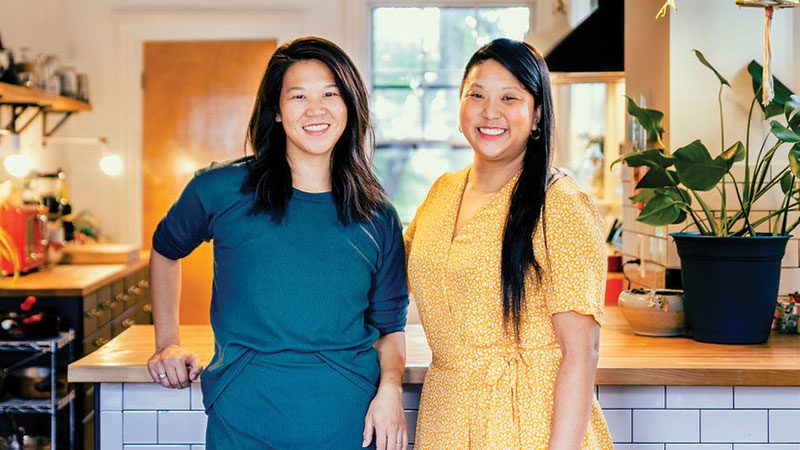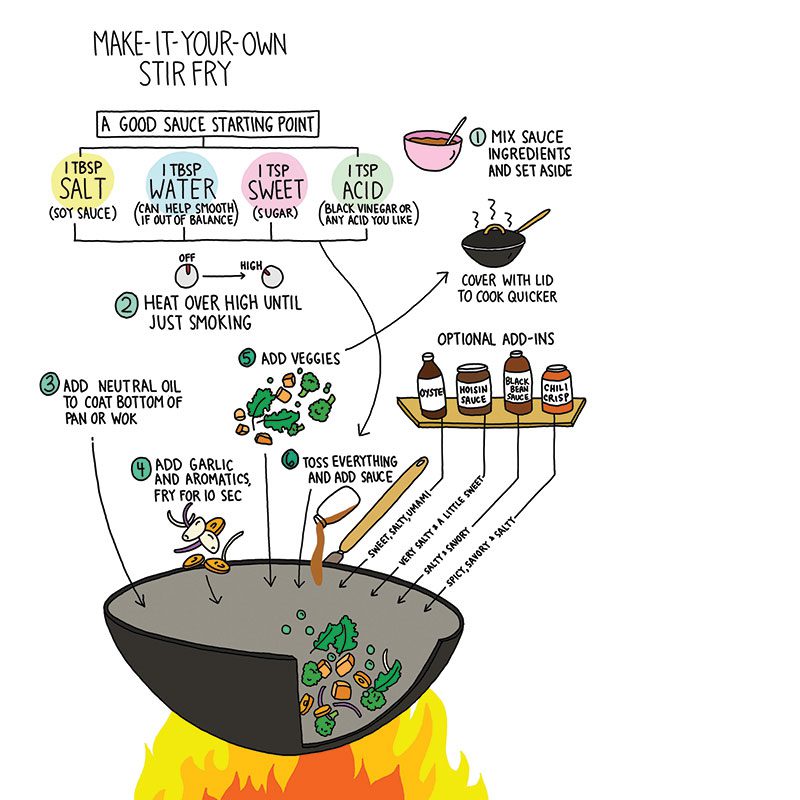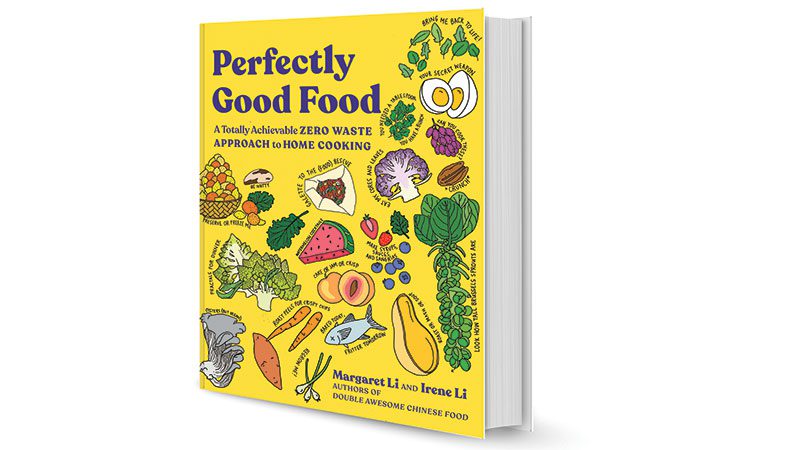Fresh ideas for cutting food waste
This article was originally published in June 2023

Looking for ways to save money on groceries? Cutting food waste is one of the most significant ways to slash your grocery budget, and it cuts your environmental impact, too.
Sometimes ideas for reducing waste feel like a burdensome setup for failure—like, if we were that organized and resourceful we wouldn’t have limp carrots and expiring milk in the first place! It’s a relief to hear fresh, simple ideas from sisters Margaret and Irene Li, who make conservation feel like a natural part of cooking and eating well. In their new book, “PERFECTLY GOOD FOOD: A Totally Achievable Zero Waste Approach to Home Cooking,” (publication date June 20, W.W. Norton, $28), they offer creative recipes but also a relaxed, flexible approach that can improve stress levels along with budgets.
The lessons came partly from the food-truck-turned-restaurant that the siblings (with brother Andrew Li) founded in Boston in 2012, and the “Double Awesome Chinese Food” cookbook Irene and Margaret wrote in 2018. All three love the food industry, though in different ways, Margaret said recently.
“Our grandparents ran a restaurant. Their idea for their children was to have none of them be in the restaurant industry. So none of our parents’ generation is in the restaurant business. But then my brother started working in restaurants early on, decades ago, and he kind of brought us in.
“My sister’s done a lot for the industry in terms of social justice, and she was on the board of a number of different food and farming nonprofits and is trying to sort of change how the restaurant industry treats its employees. I’m big on the food waste and the environmental side.”
Irene, winner of the 2022 James Beard Leadership Award, now oversees the Boston-based Mei Mei Dumplings. Margaret founded the “Food Waste Feast” website, also focused on “how to save food, save money and help save the planet.” Their different focuses—one primarily cooking for a family, one for a restaurant—helped balance perspectives and cross-pollinate ideas.
One recommended approach in the book, for instance, is establishing an “Eat Me First” box in your refrigerator (maybe a repurposed plastic clamshell?). Fill it regularly with partially used ingredients like zested lemons or an open container of heavy cream, or with items approaching-but-not-yet-crossing the finish line of their useful lives, like tomatoes too far gone for BLTs but still fine for sauce. “My sister started one in the walk-in fridge in our restaurant, and I realized almost every home cook could probably benefit from this,” Margaret said.
Some of the ideas are eye-opening: Instead of tossing or composting potato or carrot peels, for instance, they turn them into snacks. Most people know to save onion peels and garlic skins for vegetable stock; they also set them aside as a base for homemade chili oil.
Many of the sisters’ insights rest on flexibility and, ultimately, confidence: Building meals around what’s available rather than what’s listed on a recipe, understanding when to substitute or toss in something extra, recognizing when ingredients may be imperfect but still wholly edible.
Several factors contributed to Margaret’s passion for the topic: “As someone who’s frugal and cares about economy, I think it’s wasteful to throw things out. And as a business owner, especially if you want to keep your business running, you need to pay attention to that. And especially with inflation and grocery bills, that’s also resonant at home,” she said. Then there’s the environmental perspective—the U.S. Department of Agriculture says 30% to 40% of all food in the U.S. is wasted, a significant contributor to climate change. And the surprise bonus? Reducing food waste might just taste better.

“From a culinary perspective, you can get so much more flavor, and you can get more depth to your food if you’re using things like chicken bones or cilantro roots or whatever. The pieces that people often think are discards can actually bring so much depth of flavor to your food,” she said.
“And then also I just find it satisfying. I really enjoy the idea of putting together dishes from whatever is in the fridge already…How can you put all these things together to make something delicious?”
Here is a sampling of some of the book’s ideas, both big and small:
Great greens
Leafy salad greens with their short shelf life are notorious food-waste villains. If you buy them in clamshells, the Li sisters recommend putting a paper towel inside the container to absorb moisture—and, if they still wilt, refreshing them in an icy water bath. Margaret Li uses even wilting lettuces in a silky ginger-scallion oil, but said that if she doesn’t have a recipe planned for using lettuce she tends to buy sturdier greens instead—spinach, for instance, which could be cooked for omelets or pasta dishes or frozen for later.
Freeze freely
Among the many ingredients whose lives it extends: Excess brewed coffee can be frozen in ice cube trays; it can then be defrosted or dropped into hot coffee to cool it down without diluting it. Fresh ginger can be frozen—grate what you need without defrosting it and return the rest to the freezer.
Breathe deep
Store produce properly to make it last longer. The book suggests using produce bags, particularly canvas versions that keep vegetables moist and sprightly while allowing gases to escape that would otherwise encourage overripening.
Save for smoothies
Like many frugal cooks, the Lis toss leftover vegetables like carrot ends in a freezer bag for vegetable stock. But they do the same for fruits, setting up a separate smoothie freezer bag for those leftovers—the end of a bag of grapes, a banana headed for mush, the last two apple slices left over from a child’s lunch.
Lean on Heroes
Certain dishes lend themselves to using up bits and pieces of leftovers—frittatas, fried rice. Li adds more “hero” dishes to the repertoire, including okonomiyaki, a Japanese savory pancake, along with savory galettes and pot pies and “cream of anything” soup.
Accept all substitutes
A lot of cookbooks tell readers exactly what to do. It’s a liberating skill to figure out when it’s OK to improvise, and how. Margaret’s hope for the book: “that people become more empowered to cook for themselves in the way that they like and deviate from a recipe or create something without a recipe and learn through the book to trust their senses.”

